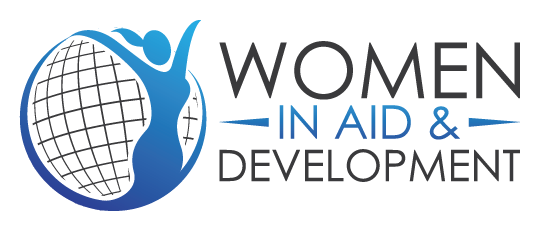The Changing Face of the Aid & Development Sector
By Jill Scanlon - WiAD Director
It’s been a busy start to 2025, with rumblings out of the US, concerning the dismantling of much of the work of USAID globally, emerging to take centre stage and setting an uneasy tone. Offsetting that trend was the annual recognition of International Women’s Day (IWD) in early March, celebrated globally, underlining much of the important work being done in the aid and development sector around gender equality and empowerment.
Closer to home, WiAD hosted its first city events of the year, proudly marking IWD, as it does every year. Held in three cities and online, the IWD 2025 themes of March Forward and Accelerate Action were explored by a range of strong guest speakers who addressed the issues around gender, and the progress (or lack thereof) of change, over the 30 years since the UN Beijing Declaration and Platform for Action of 1995. The 69th session of the Commission on the Status of Women (CSW) also took place in the week following IWD, with a review of the past three decades and what the current issues for women are in relation to that original declaration – and the ongoing review and subsequent discussions and debates around why this issue persists in being a challenge.
Constant activity in the sector makes news almost daily, sometimes to the extent of being hard to keep up with - conflicts, aid cuts and natural disasters - all with ramifications particularly for women and children – be it health issues, education, logistics impacting delivery of development programs and the ever-present ripple effect of geo-political manoeuvring.
As a part of all that, the international development landscape witnessed what can only be termed as unprecedented seismic shifts in the sector, with the move in February, by the newly installed US Republican administration, to dismantle one of the world’s largest aid agencies – the US Agency for International Development – which has quickly devolved into a miasma of despair and analysis about what this will mean for the sector globally, in both the short and long term.
The ramifications are being felt on a very broad scale, impacting programs focused on health, education, women, refugees, disaster recovery to name just a few, and not only for the recipients of those programs, but also for aid workers, managers and service delivery personnel across the globe. The impact reach is even to an extent that seems to be surprising, certainly bemusing, those with the slightest of connections to USAID, with, as an example, Australian researchers reportedly being sent questionnaires from the US administration asking them to justify American research grants in part or whole.
While we could continue for many more pages on the USAID issue alone, closer to home the question must be asked about the response of the Australian government to this evolving situation. With the release of the latest federal budget, ahead of a May election, the Australian government has seemingly bucked the international trend and increased aid spending for the next year by 2.7%, with the prospect of a 2.5% annual increase over the next 10 years. Of course, that’s all ‘adjusted’ in various ways to use financial lingo and is premised on the outcome of the upcoming poll.
I guess what we can say is that, more than ever before, the development sector is an entity with many moving pieces, and always with certain levels of unpredictability, although never perhaps quite to this extent. Roll on 2025 and show us what further surprises you have in store!
